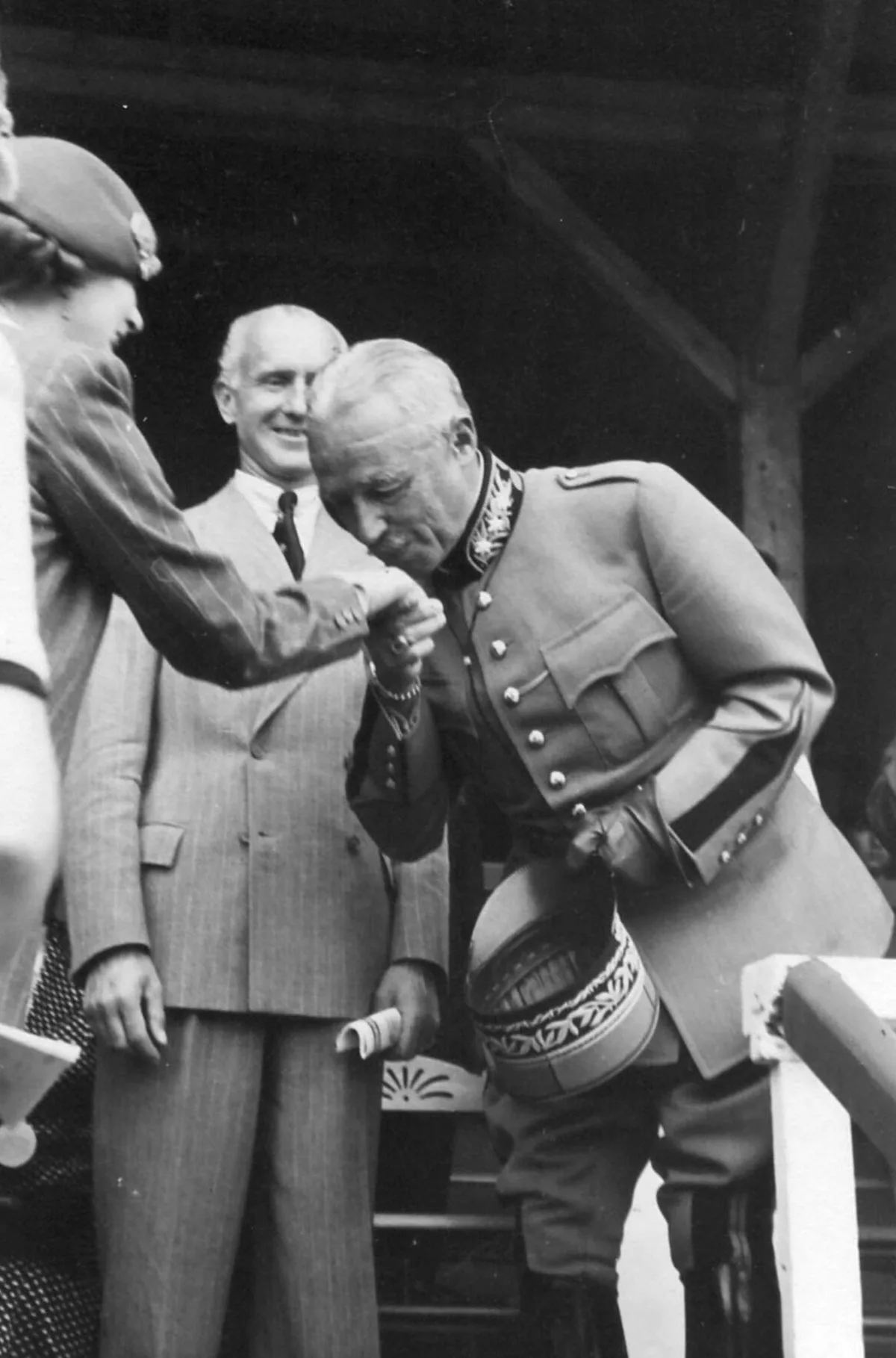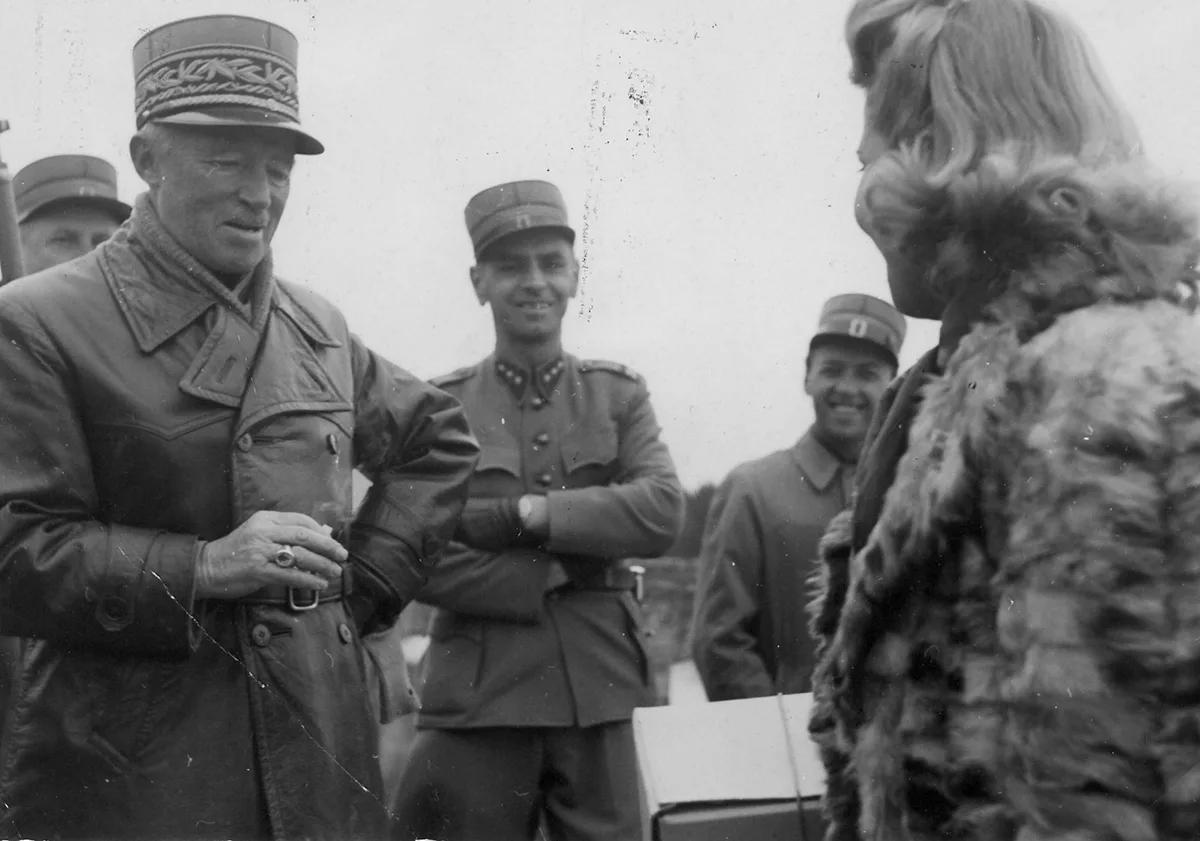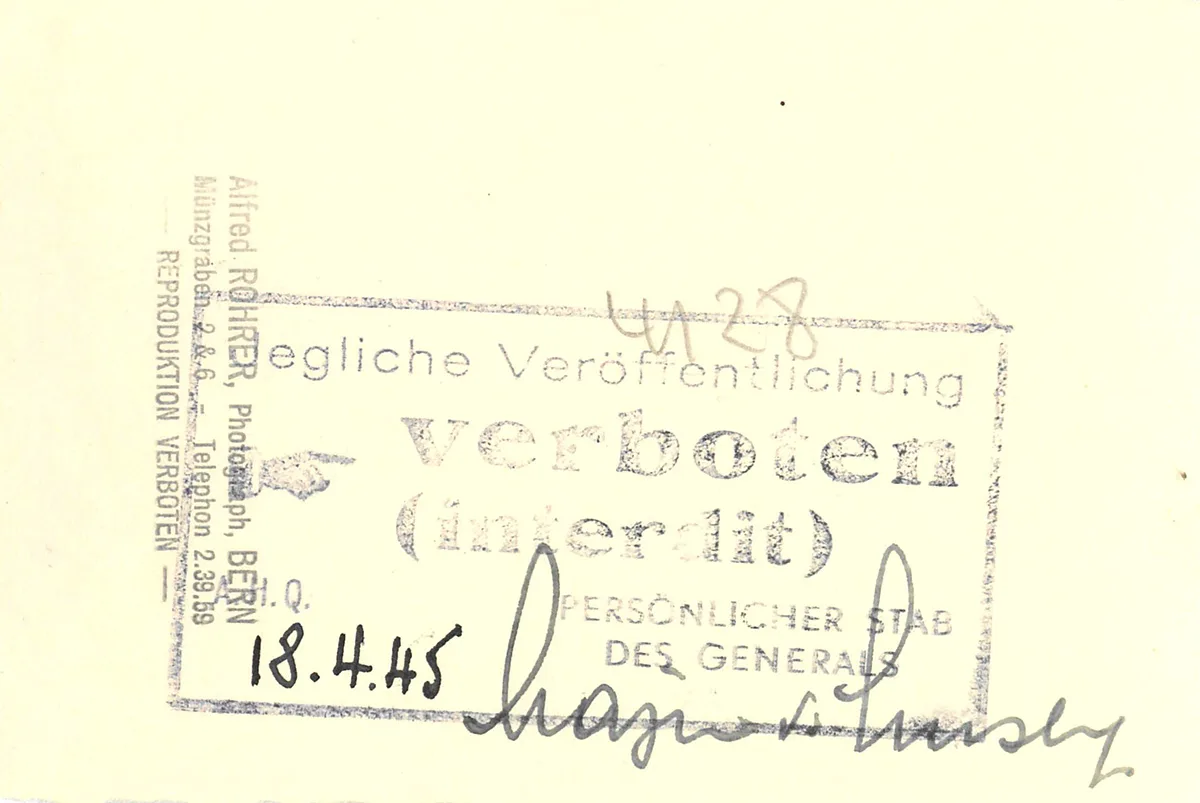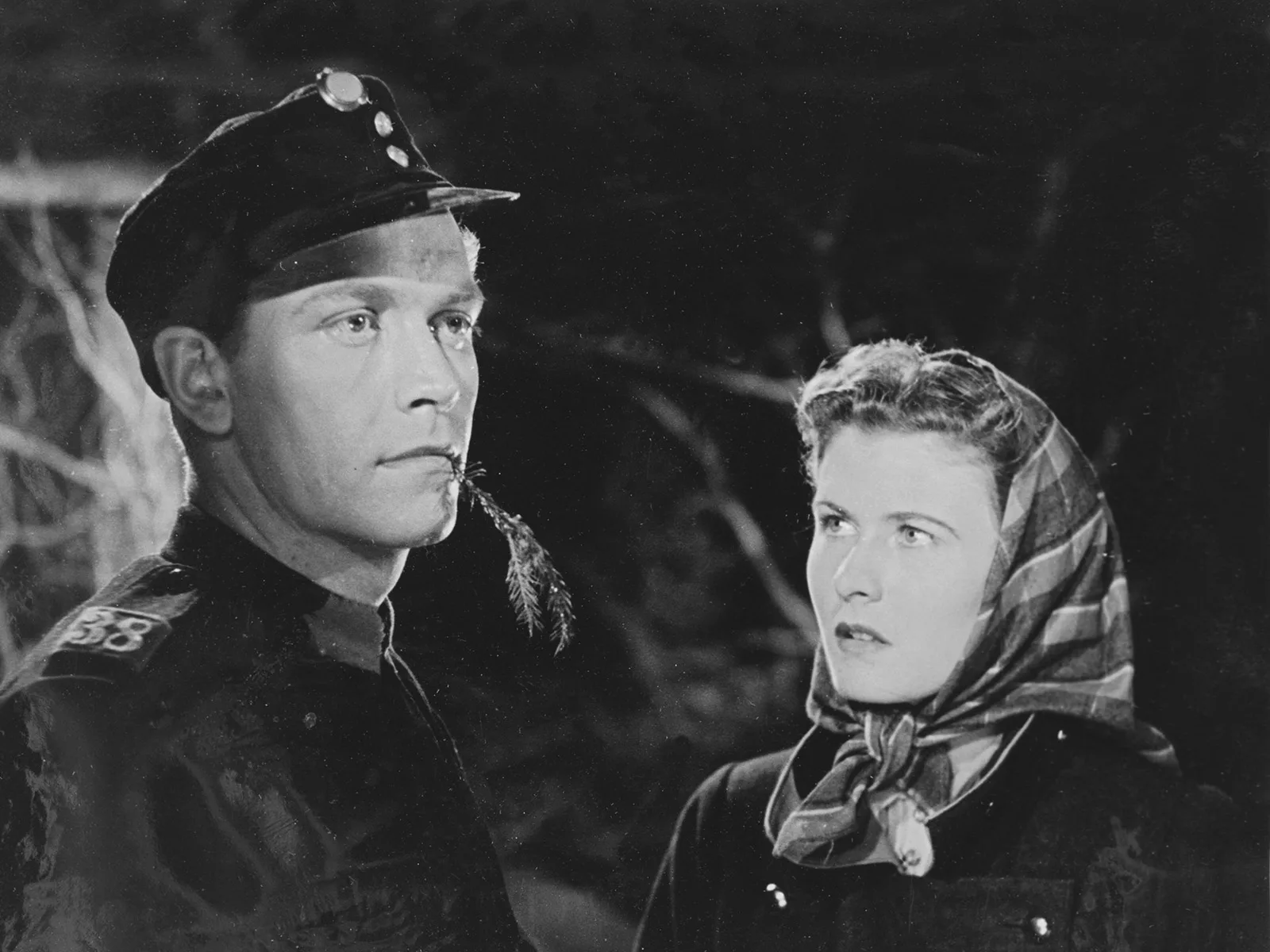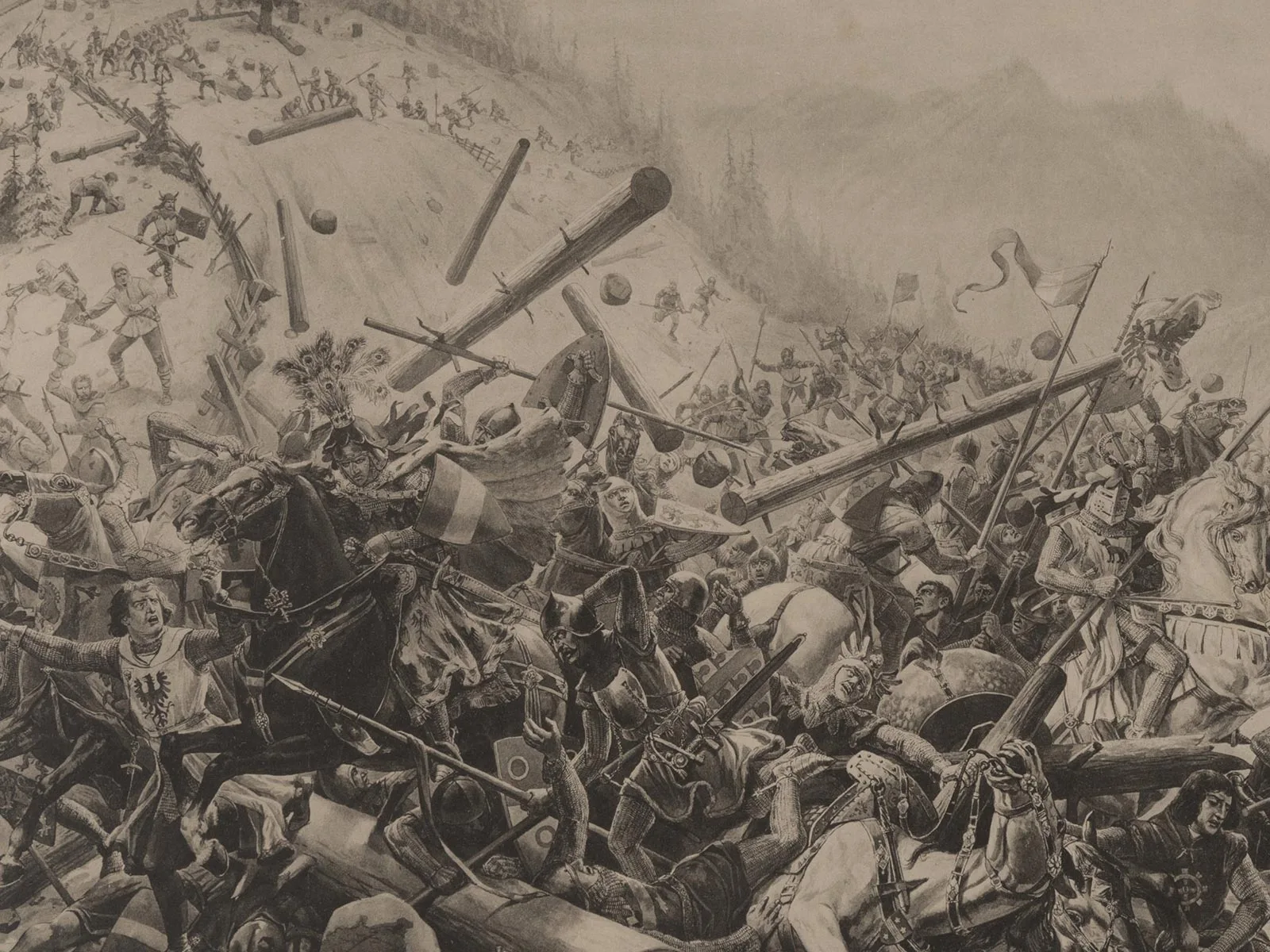
Resistance and vanity
As a general, Henri Guisan led Switzerland through World War II. His public image alternated between resistance and diligent personal propagandisation.

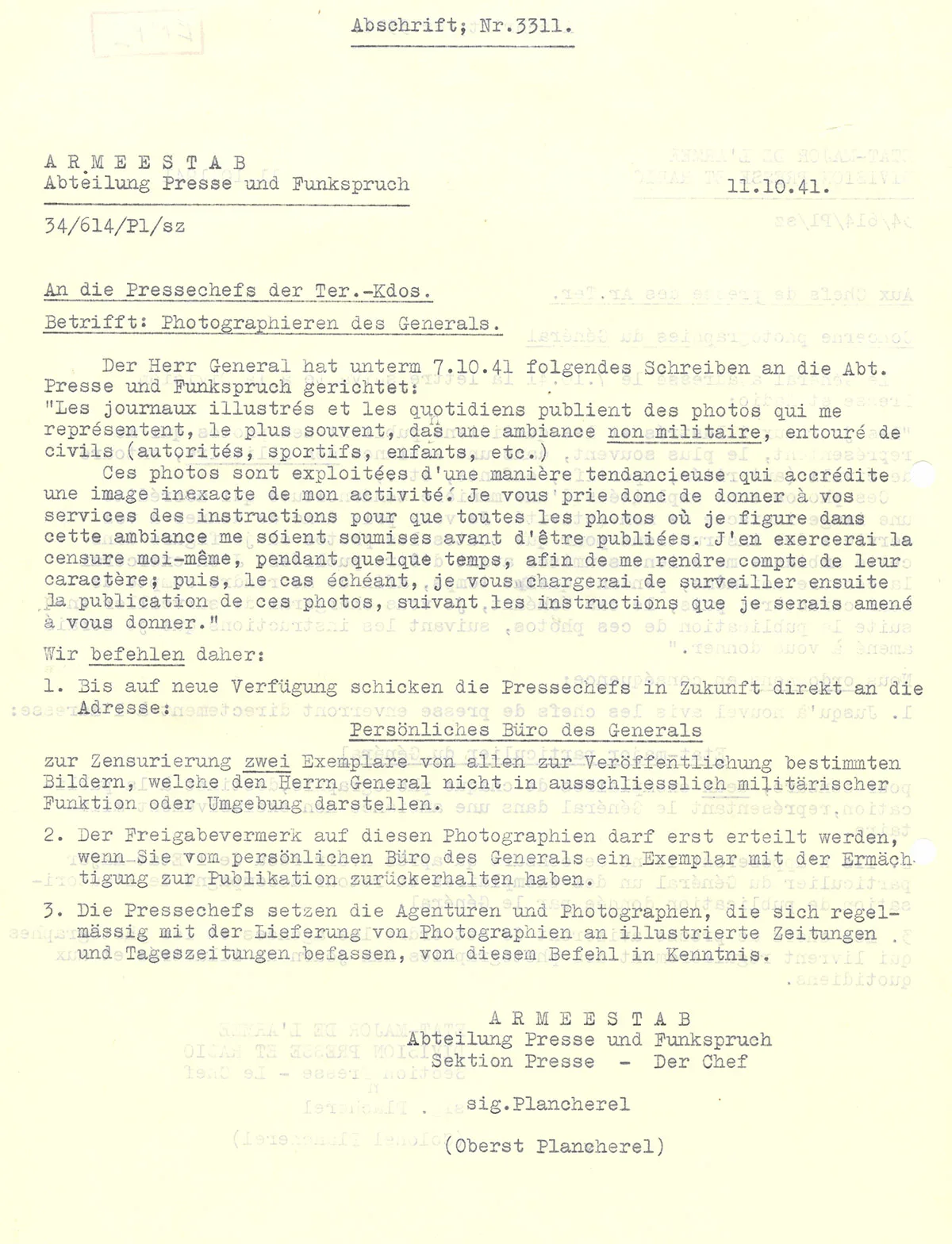
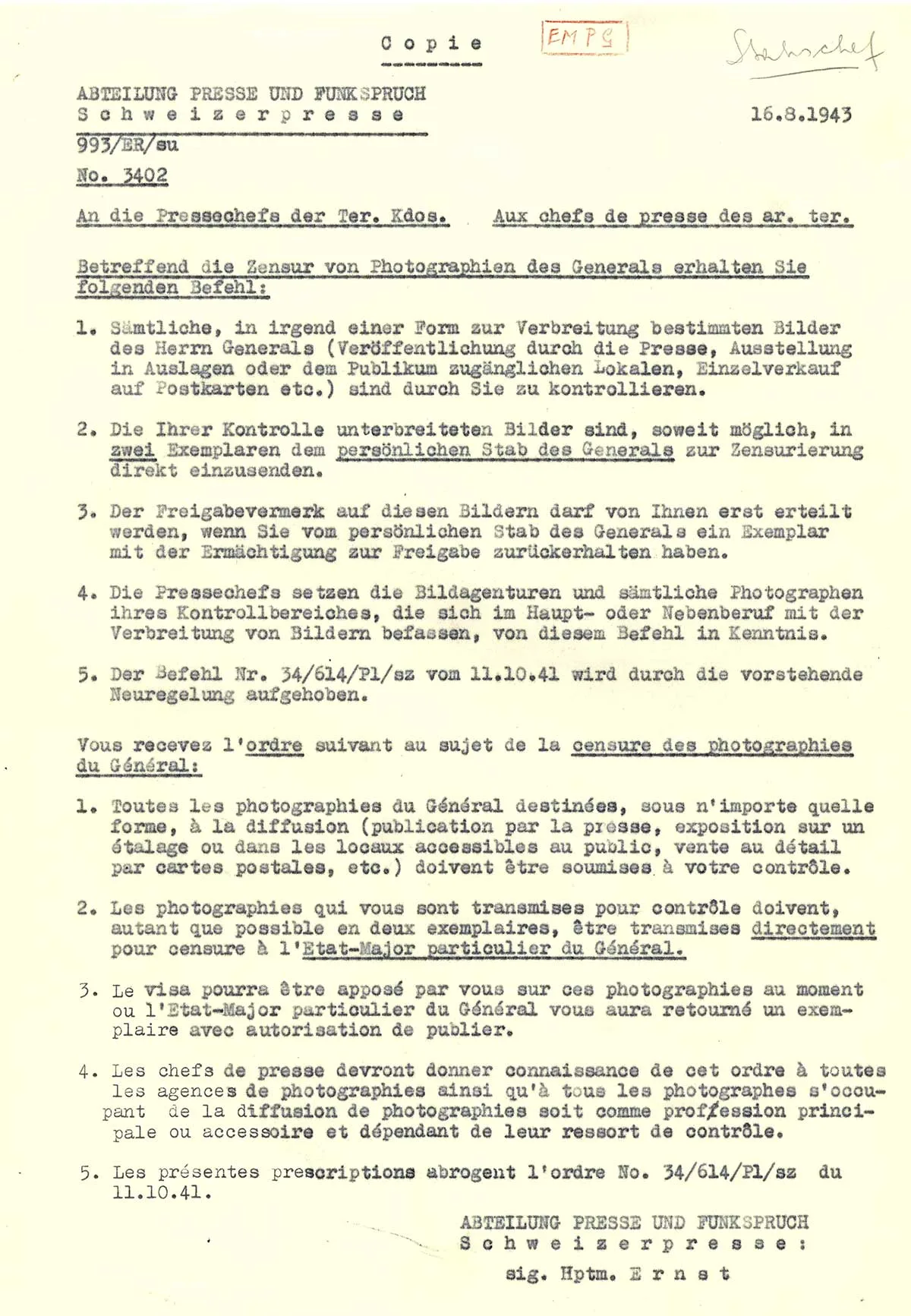
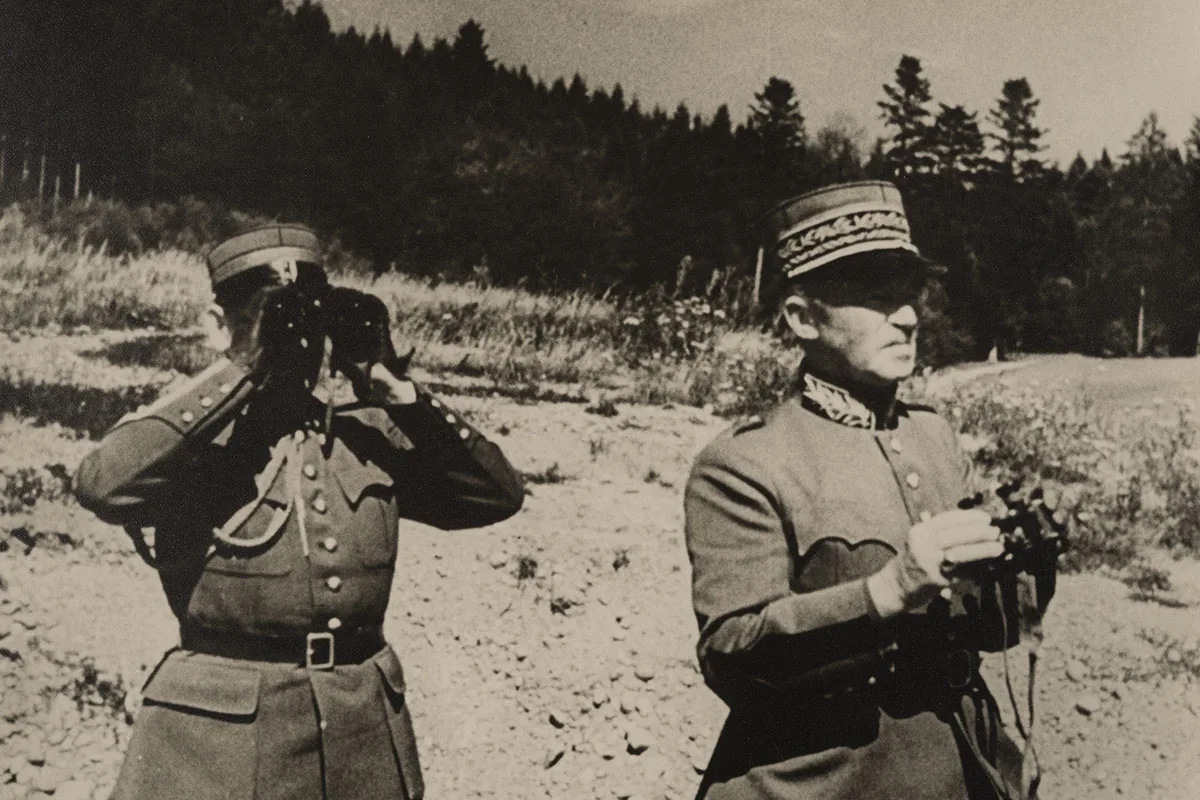
In cinematic footage too, care was taken to ensure the staging sent the right messages. Movie in German. SRF
The General’s secret diplomacy

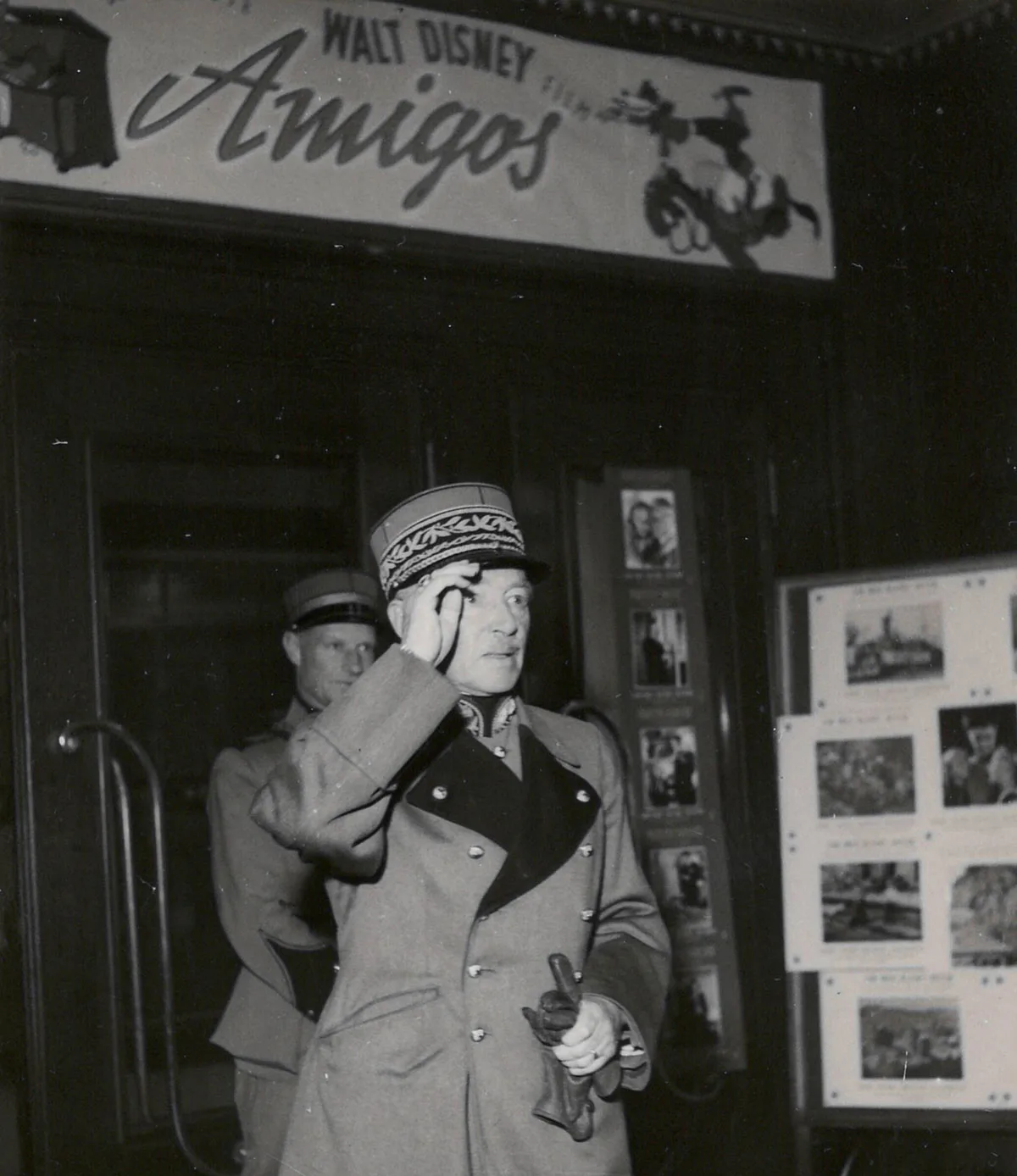
There was also a little bit of propagandisation
